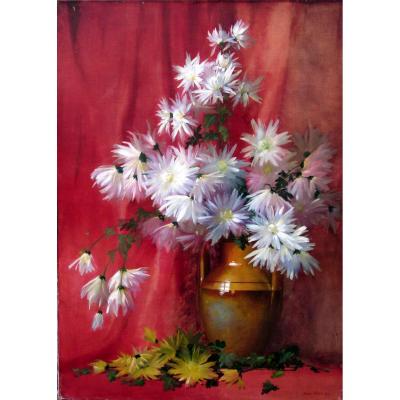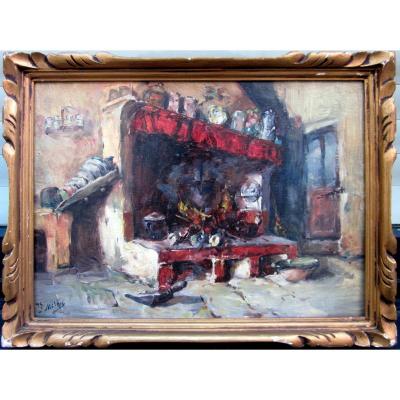The work is done in pastel on paper, in good condition, it is signed lower left and presented under glass in a modern frame from the 60s which measures 83 cm by 68 cm and 60 cm by 45.5 cm at sight.
It represents a seated young woman, naked with a pensive and mysterious look.
French painter and illustrator born in 1889 and died in 1937.
A student of the Académie Julian, and strongly influenced by Paul Cézanne, Favory painted in a cubist style during the first years of his career.
In 1914, mobilized, he left for the First World War. When he exhibited again in 1919, the experience of the trenches had profoundly modified his conception of art. He then moved away from the Cubist movement, which he considered too intellectual, to approach more of the carnal aspects of nature and life.
He made frequent trips to Belgium to study the work of Rubens, who therefore exerted a determining influence on him.
Having become a master of color and movement, Favory now paints landscapes in warm tones, voluptuous nudes and very sensual female portraits. He exhibited regularly at the major Salons (Salon d'Automne in 1921-1923, Salon des Tuileries in 1923-1924, etc.). During the 1920s, Favory's works were exhibited in numerous galleries in Paris and Brussels, as well as in London, Amsterdam, New York and Tokyo. For critics as influential as Louis Vauxcelles, he is a major artist of his generation.
At the same time, he worked as an illustrator, for works such as Les Poèmes de l'humour sad by Jules Supervielle (1919), a reissue of L'Éducation sentimentale by Gustave Flaubert (1924), Ouvert la nuit by Paul Morand (1924). ), The Game of “Madame Malade” by Maurice Beaubourg (1926), or Drugs and Paintings, contemporary art album by François Quelvée (undated).
Suffering from a serious and debilitating illness, he had to stop painting in the early 1930s, and died in 1937.
Exhibitions
Yves Alix, René Durey, André Favory, Wilhelm Gimmi, Marcel Roche and Henry de Waroquier, Galerie Marcel Bernheim, 1923.
Works in public collections
In France
Several of his works, including The Model's Rest (1924), are kept in Paris at the National Museum of Modern Art.
In Swiss
Geneva, Petit Palais: The Bathers.


















































 Le Magazine de PROANTIC
Le Magazine de PROANTIC TRÉSORS Magazine
TRÉSORS Magazine Rivista Artiquariato
Rivista Artiquariato